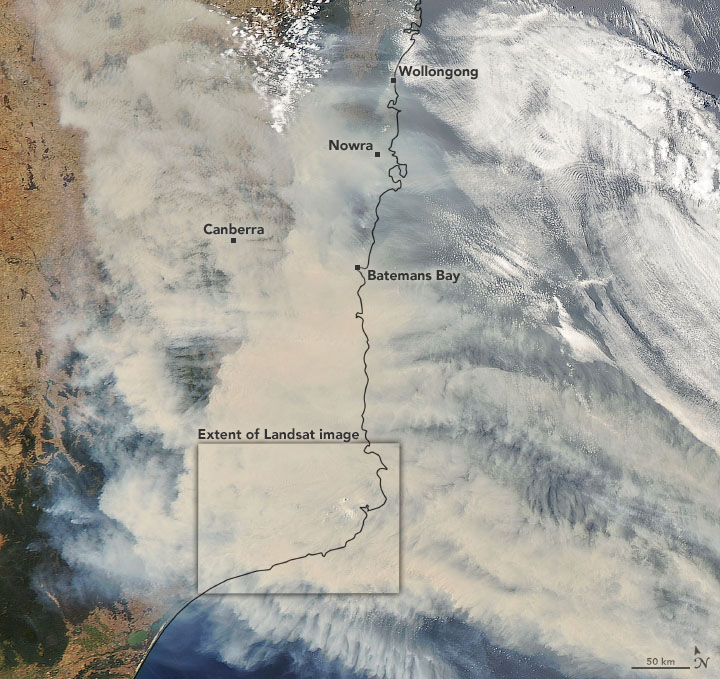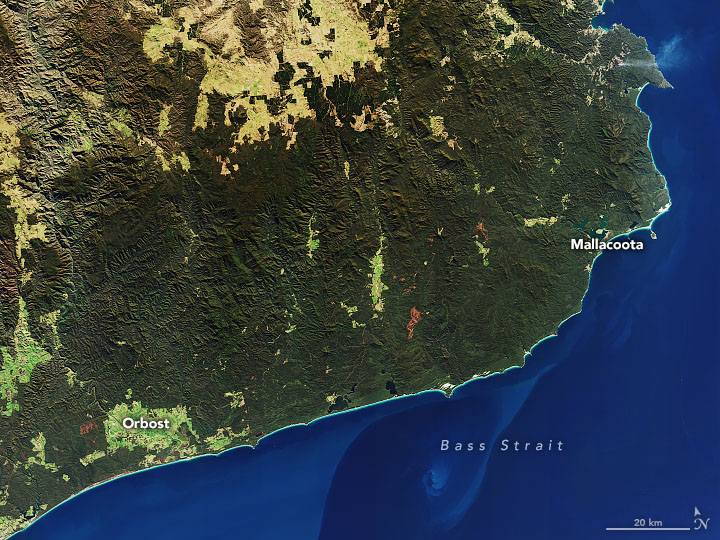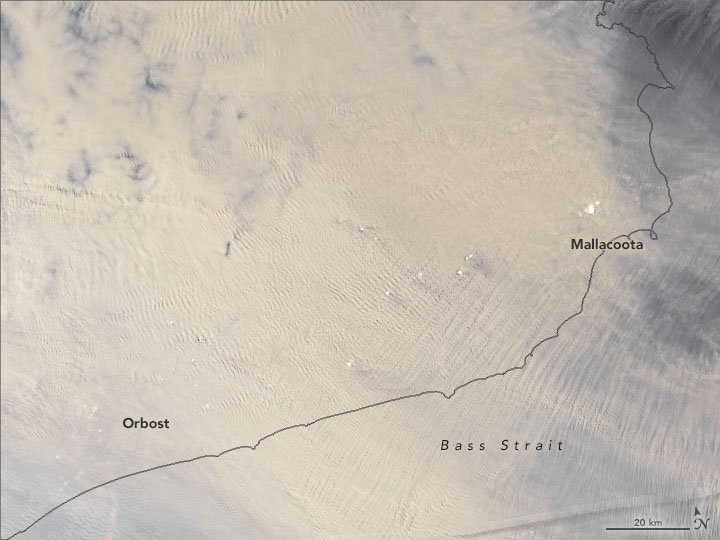Astronauts Spot Australia's Deadly Wildfires from Space Station as Satellites Keep Watch
The horrific wildfires of southeastern Australia right are clearly visible to satellites in space, and now astronauts have begun tracking them from the International Space Station.
A new photo, which NASA shared on Twitter Jan. 3, shows billowing smoke that surrounds Sydney and is blowing into the nearby Tasman Sea. At the time, the space station was roughly 269 miles (433 kilometers) above Australia at the time, NASA said in the tweet.
The wildfires, which began September, have so far killed at least 25 people. The fires have burned an area about twice the size of the state of Maryland, torching about 2,000 houses and, according to the Associated Press. Additionally, Australia's wildlife has suffered tremendously, with countless animals losing their lives to the fires.
Related: Australia's Deadly Wildfires in Photos: The View from Space
While this is wildfire season in Australia, experts have said that these fires are more extreme than usual and can be linked to climate change. "Climate change is increasing bushfire risk in Australia by lengthening the fire season, decreasing precipitation and increasing temperature," the Australian Bureau of Meteorology has said, according to USA Today.
In addition to astronaut views, NASA's venerable Landsat 8 and Aqua Earth-imaging satellites have captured images of the thick smoke in southeastern Australia, particularly around Victoria and New South Wales. The dusty smoke shows up as tan in the images, while normal clouds look bright white, NASA said in a statement.
"The record-setting and deadly fire season in Australia took a dramatic turn in the last week of December and the first week of January," Mike Carlowicz with NASA's Earth Observatory at the Goddard Space Flight Center in Maryland wrote in the statement. "Residents of southeastern Australia told news media about the daytime seeming to turn to night, as thick smoke filled the skies and intense fires drove people from their homes."
Breaking space news, the latest updates on rocket launches, skywatching events and more!
On Monday (Jan. 6), Australian Prime Minister Scott Morrison said that he would provide an additional 2 billion Australian dollars ($1.4 billion) to fight the fires. "The fires are still burning. And they'll be burning for months to come," Morrison said in the Associated Press report. "If more is needed and the cost is higher, then more will be provided."
However, despite the promises made by Morrison and existing support to fight against the raging fires, many Australians are unhappy with the Prime Minister's previously, seemingly relaxed attitude toward the crisis and his dismissal of climate change and its deadly impact, according to the New York Times.
NASA has been keeping a close eye on this crisis for weeks and has been updating satellite imagery frequently via its Worldview tool. This tool feeds in data from 26 satellites (known as the Earth Observing System); observatories such as Aqua, Suomi NPP and Terra all contribute to the massive database.
- California Wildfires Signal the Arrival of a Planetary Fire Age
- How Satellites Are Helping California's Wildfire Recovery Efforts
- In Photos: The 2018 California Wildfires As Seen from Space
Follow Elizabeth Howell on Twitter @howellspace. Follow us on Twitter @Spacedotcom and on Facebook.


Elizabeth Howell (she/her), Ph.D., was a staff writer in the spaceflight channel between 2022 and 2024 specializing in Canadian space news. She was contributing writer for Space.com for 10 years from 2012 to 2024. Elizabeth's reporting includes multiple exclusives with the White House, leading world coverage about a lost-and-found space tomato on the International Space Station, witnessing five human spaceflight launches on two continents, flying parabolic, working inside a spacesuit, and participating in a simulated Mars mission. Her latest book, "Why Am I Taller?" (ECW Press, 2022) is co-written with astronaut Dave Williams.




